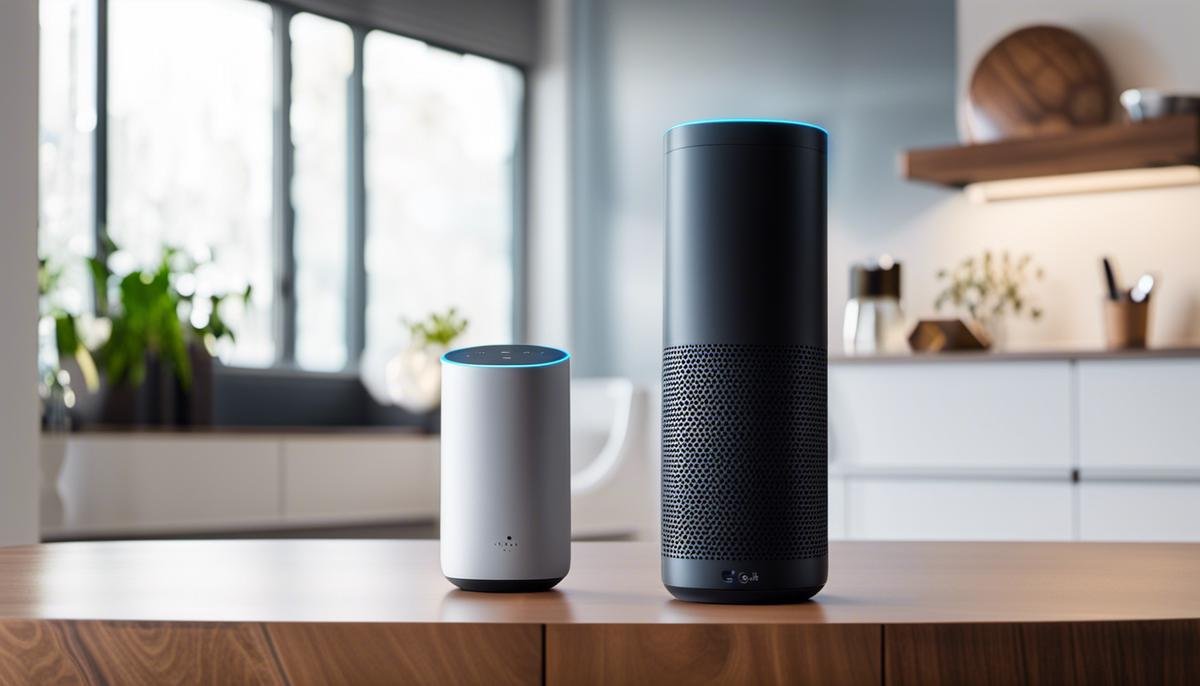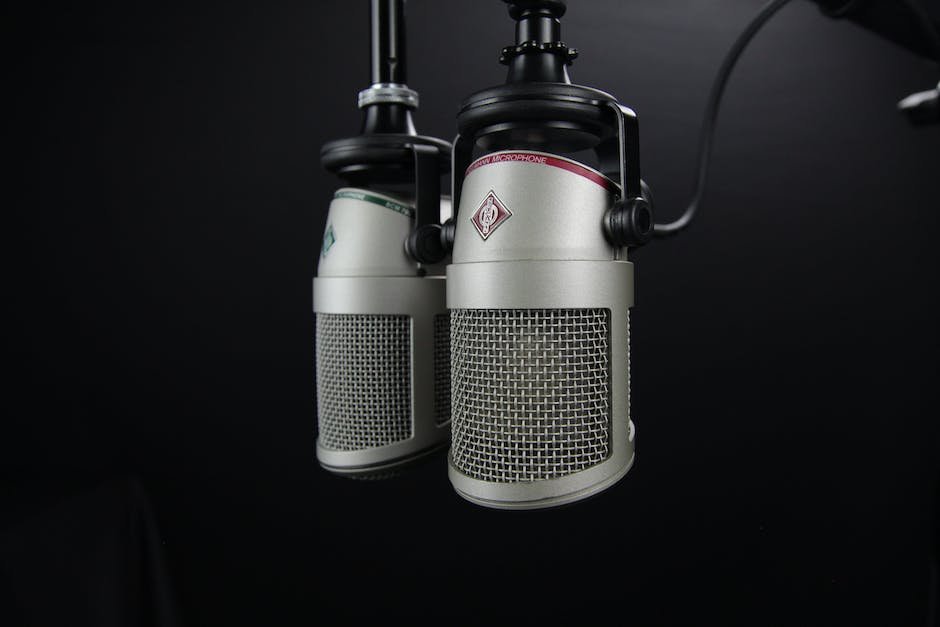In an era of constant technological innovation, speech recognition stands out as one of the leaders in its field. This groundbreaking technology, which once merely existed within the realms of science fiction, has merged seamlessly into our everyday lives converting spoken language into written text. From helping Siri understand your requests to transcribing your physician’s notes, the applications of speech recognition are widespread and diverse. In this deep dive, we will journey into the mechanics of this fascinating technology, explore real-world applications, tackle its current limitations, and take a glimpse into the crystal ball of its prospective future trends.
Understanding Speech Recognition
Understanding Speech Recognition
Speech recognition is a technology that transforms spoken language into written text. As part of the broader field of artificial intelligence (AI), speech recognition is designed to understand and respond to human speech, thus enabling human interaction with machines and building more efficient computer platforms.
A Brief History of Speech Recognition
The development of speech recognition started as early as the 1950s. ‘Audrey,’ developed by Bell Laboratories in 1952, was the first speech recognition system. It could recognize single digits spoken by a clear and distinct voice. The 1960s saw the development of more sophisticated systems, such as IBM’s ‘Shoebox’, which could understand 16 English words. The ’80s and ’90s introduced ‘Hidden Markov Models,’ a statistical tool to manage uncertainty, which greatly improved the systems’ accuracy. Today’s speech recognition technology is heavily based on machine learning and AI.
The Necessity of Speech Recognition
The potential of speech recognition technology is vast and multifaceted. In healthcare, it assists doctors in taking notes, freeing them to focus more on patients instead of dealing with paperwork. Similarly, in customer service, it facilitates automatic transcriptions, thereby increasing efficiency. Moreover, it helps individuals with visual or mobility impairments to more effectively engage with technology.
Evolution and Current State of Speech Recognition
Modern speech recognition technology has evolved significantly, especially with the advent of AI and deep learning. Today, devices like Amazon’s Alexa, Google’s Assistant, and Apple’s Siri have integrated speech recognition, transforming how we interact with technology. These devices are capable of understanding and acting on a variety of voice commands due to advancements in natural language processing, a subfield of AI that enables machines to comprehend human language as it’s spoken.
In addition to everyday applications, speech recognition technology is making strides in areas like real-time transcription services, telemarketing, home automation, and even robotics.
Challenges and Future Possibilities
While speech recognition technology has made significant strides, challenges remain. These include dealing with accents, dialects, and language slang, as well as understanding nuanced meanings and contexts. However, ongoing research and advancements in AI promise to address these difficulties.
As we delve into the fascinating realm of speech recognition, it’s clear that its future is both vast and promising. With the technology garnering more precision and capacity, we start to foresee its advanced integration into diverse sectors, encompassing the automotive, education, healthcare, and hospitality industries.

How Speech Recognition Works
Delving into the World of Speech Recognition
Speech recognition technology, at its core, is all about computers or apps acquiring the ability to identify and react to our spoken words or commands. Central to the operation of devices such as voice assistants or smart speakers, it essentially translates our spoken language into a written text format.
Natural Language Processing in Speech Recognition
The key component in speech recognition technology is Natural Language Processing (NLP). NLP is a branch of artificial intelligence (AI) that involves machine interpretation, generation, and understanding of human language. This makes the interaction between humans and devices more natural and intuitive.
Speech recognition starts with spoken language, but the process truly begins after the device or program picks up the speech input. The system then transcribes the spoken speech into text. The NLP algorithms parse the text by breaking it down into sentences, phrases, and individual words. The NLP uses linguistic rules to interpret the meaning of each segment of text and its context in the sentence.
Machine Learning Algorithms in Speech Recognition
Machine learning, a subset of AI, plays a massive role in improving the accuracy of speech recognition. It uses vast amounts of linguistic data to train speech recognition systems and ‘learn’ from past mistakes or inaccuracies. Through this iterative process, the system gains the capability to comprehend a variety of accents, dialects, speech patterns, and even languages.
Deep learning, a subfield of machine learning, enhances the processes by using neural network structures that imitate the neural structure of the human brain. This helps speech recognition systems to recognize spoken words and patterns more accurately.
Speech-to-Text Conversion Process
The fundamental process in speech recognition is the conversion of speech into text. This involves two key models: an acoustic model and a language model.
The acoustic model uses statistical representations of each sound that makes up each word. It helps the system to understand the different ways a word may sound when spoken due to accents, pacing, and intonations.
Conversely, the language model predominantly deals with probability. It helps the system to understand the context by guessing what word comes next within a sentence. The language model also helps in grading or filtering the outputs of the acoustic model by giving probabilities to sequences of words.
The Unique Challenge of Speech Recognition
Speech recognition presents a unique challenge in technology simply because no two individuals share the exact same pattern of speech. Each person’s style of speaking varies based on a variety of factors, making this a complex field to navigate. However, with constant advancements being made in areas like artificial intelligence and machine learning, we have witnessed significant improvement in speech recognition technology. It is through acoustic and language modeling that we achieve the impressive performance associated with modern speech recognition systems.

Applications of Speech Recognition
Speech Recognition in Voice Assistants
Perhaps the most visible application of speech recognition technology is found within popular virtual voice assistants including Siri, Alexa, Google Assistant, and Cortana. These assistants utilize speech recognition to comprehend and execute voice commands given by users. Simple tasks such as setting alarms, making calls, or asking questions become hands-free activities, facilitated solely by voice. Once the instruction is understood, the assistant employs speech synthesis technology to communicate the appropriate response back to the user, thereby enabling an interactive conversation with an artificial intelligence.
Transcription Services: Accuracy and Efficiency in Text Production
Speech recognition also plays a key role in transcription services. In this realm, the technology converts spoken languages into written form. While humans historically performed this task, the advent of automated speech recognition services has made it quicker, more accurate and more efficient than manual transcription. Major areas where transcription services are used include law enforcement, legal proceedings, medical services, and journalism. In these industries, timely and precise transcriptions are critical, and speech recognition technology has proven to be a valuable tool.
Customer Service: Streamlining Communication for Businesses
Customer services extensively use speech recognition technology as well. Interactive Voice Response (IVR) systems at call centers use this technology to interact with callers, understand their requirements, and provide relevant information or redirect the call to an appropriate agent. The technology significantly improves customer experience by ensuring the customer is directed to the right department without wastage of time and provides automated services after office hours.
Healthcare: Assisting in Patient Care and Documentation
In healthcare, speech recognition technology helps in many ways. Physicians use it for transcribing patient records, dictating instructions, and even for navigating radiology images. Such hands-free operation enables physicians to focus more on patients, enhances patient care, and helps create more accurate documentation. Additionally, some companies have developed specific medical speech recognition tools for specialized vocabulary, further improving the efficiency of this technology in a healthcare setting.
Enriching Home Control through Automated Speech Recognition
Speech recognition technology is seeing an unprecedented wave of integration into home automation systems. Smart home devices across the board, from lighting to thermostats and security systems, now often have speech recognition capabilities built-in, allowing for hands-free voice command operation. Crucial to this change are voice assistant technologies such as Alexa or Google Home, which serve as the central hub of many modern smart homes, effortlessly facilitating the control of multiple home devices with spoken instructions. In essence, this innovative application of speech recognition makes interacting with home automation systems more efficient and user-friendly than ever before.

Challenges in Speech Recognition Technology
Potential Hurdles in Implementing Effective Speech Recognition
Despite these advancements, implementing speech recognition technology does come with its own set of challenges, the most significant being the interference of background noise. Given that the technology operates mainly by pattern recognition and ensuring signal consistency, extracting clear voice commands from noisy environments can prove difficult. When irregular, noise-induced patterns seep into the system, it can hinder the precise identification of commands and degrade accurate data interpretation.
Accents and Speech Recognition
Another problem that confronts speech recognition technology is dealing with accents. Different people can pronounce the same words differently, which can cause confusion for the AI software. Not all software can accurately understand different accents, tones, dialects, and languages, which makes it difficult for users with heavy accents to interact with voice recognition technology.
Homophones: An Invisible Challenge
Homophones – words that sound the same but have different meanings – pose another challenge to speech recognition technology. A classic example is “there,” “their,” and “they’re.” While humans can often deduce meaning from context, AI might struggle to determine the correct version, potentially misinterpreting voice inputs.
The Hurdle of Voice Differentiation
Furthermore, recognizing individual voices can be another stumbling block for speech recognition technology. This ability is pivotal when multiple users are interacting with a single device. For instance, a smart speaker in a household should ideally differentiate between family members to provide personalized responses, but this proves to be difficult for the technology at times.
Challenges Related to Privacy and Security
Speech recognition technology also grapples with concerns related to user privacy and data security. Many users are alarmed by the idea that their conversations could be recorded and stored without their knowledge. There are also worries that these audio recordings could be hacked, putting personal information at risk. It is crucial for developers to ensure stringent security measures are put in place and user consent obtained before recording any voice interactions.
Developing Solutions for Challenges in Speech Recognition
Speech recognition technology has already taken monumental strides, but ongoing challenges suggest that ample space for enhancement remains. The path to overcoming these issues may include everything from improving artificial intelligence learning methods, bolstering noise reduction features, or making advances in security protocols. As research and development efforts persist, the evolution of more refined speech recognition technologies can be anticipated.

Future Trends in Speech Recognition
The Dawn of Future Advancements in Speech Recognition
The realm of speech recognition is continuously evolving, paving the way for a transformative shift in human-computer interface. These developments promise to optimize communication, elevate service provision, and open myriad opportunities for businesses and individuals. Exciting future innovations, such as next-level voice biometrics, deep learning, and multilingual speech recognition systems, are already beginning to emerge.
Voice Biometrics
Voice biometrics has become one of the hottest trends in speech recognition. The technology leverages the unique characteristics of an individual’s voice to verify identity, thus providing a more secure authentication method in contrast to traditional passwords that could be hacked or forgotten. With speech patterns widely believed to be as distinctive as signatures and fingerprints, the development of advanced voice biometrics is expected to bolster security in corporate, banking, and consumer sectors. Future iterations of voice biometrics are likely to implement multi-factor authentication, incorporating real-time environmental noise analysis, and detecting synthesized voices to cancel out fraudulent, taped, or computer-generated voice-like sounds.
Deep Learning in Speech Recognition
Deep learning, a subset of machine learning and artificial intelligence (AI), is proving instrumental in the continuous evolution of speech recognition. As a technology, deep learning can imbibe layers of complex data inputs and outputs, refining the accuracy of speech recognition systems. The future of this technology may involve incorporating more emotive understanding into speech recognition systems, wherein the AI can distinguish emotional context from speech patterns and respond accordingly. This advancement is expected to open doors for more empathetic AI, particularly in fields like customer service and mental health.
Multilingual Speech Recognition Systems
As globalization continues to increase and reaffirm the necessity of understanding multiple languages, the introduction and enhancement of multilingual speech recognition systems are being prioritized. While current speech recognition technology largely focuses on major languages like English, Spanish, and Mandarin, anticipated advancements aim to accommodate a more diverse range of languages and dialects. By integrating diverse speech models and accents into systems, the technology is expected to develop a global reach, making AI-driven devices more accessible and effective worldwide. This trend is set to drive a boom in language learning and translation services while promoting cultural understanding and connectivity.
Overall, the future of speech recognition technology promises a blend of improved functionality, increased security, and broader inclusivity. The possibilities these advancements hold are boundless, with potential applications extending to every facet of daily life and industry, profoundly reshaping the way we interact with machines and with each other.

Speech recognition technology has undeniably transformed our interaction with technology and continues to influence a variety of sectors. The strides taken in this field have led to more efficient customer services, streamlined healthcare processes, and ushered in a new era of home automation. Yet, in spite of its advancements, challenges persist. The technology grapples with issues related to accents, homophones, background noise and privacy to name a few. As we look toward the future, it gives hope to see predictive advancements in areas like deep learning, voice biometrics and multilingual systems. Undoubtedly, as the proverbial kinks are ironed out, our ability to communicate with our devices will continue to evolve, further engraining speech recognition into the fabric of our daily lives.




